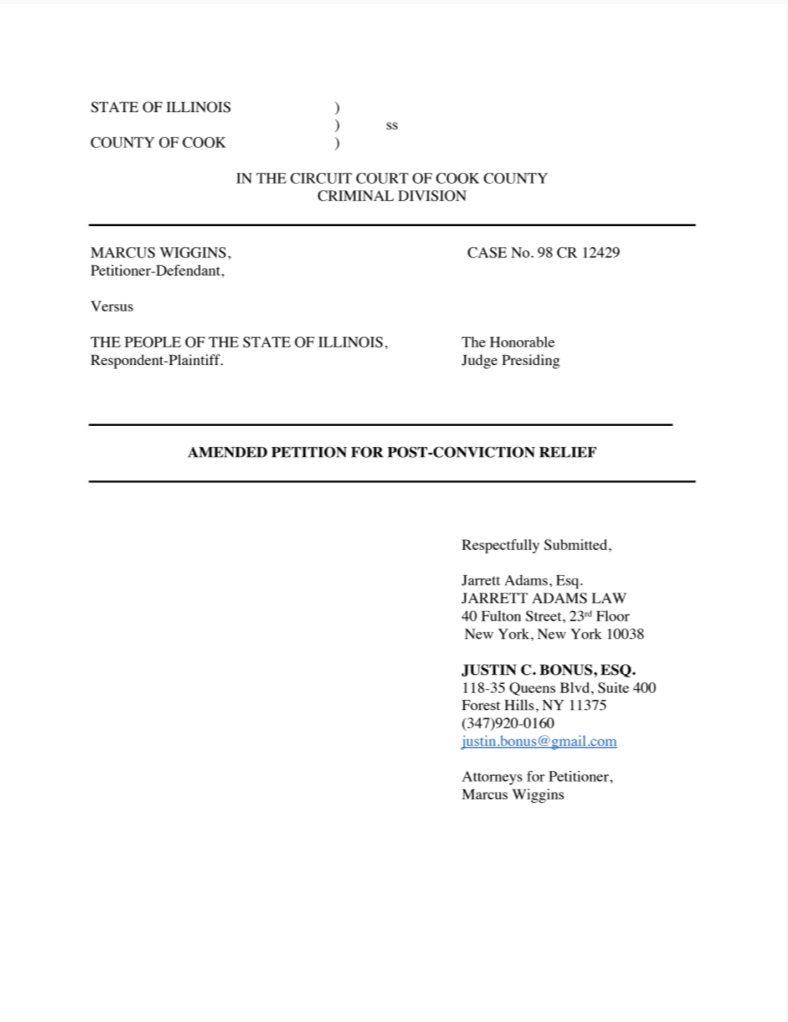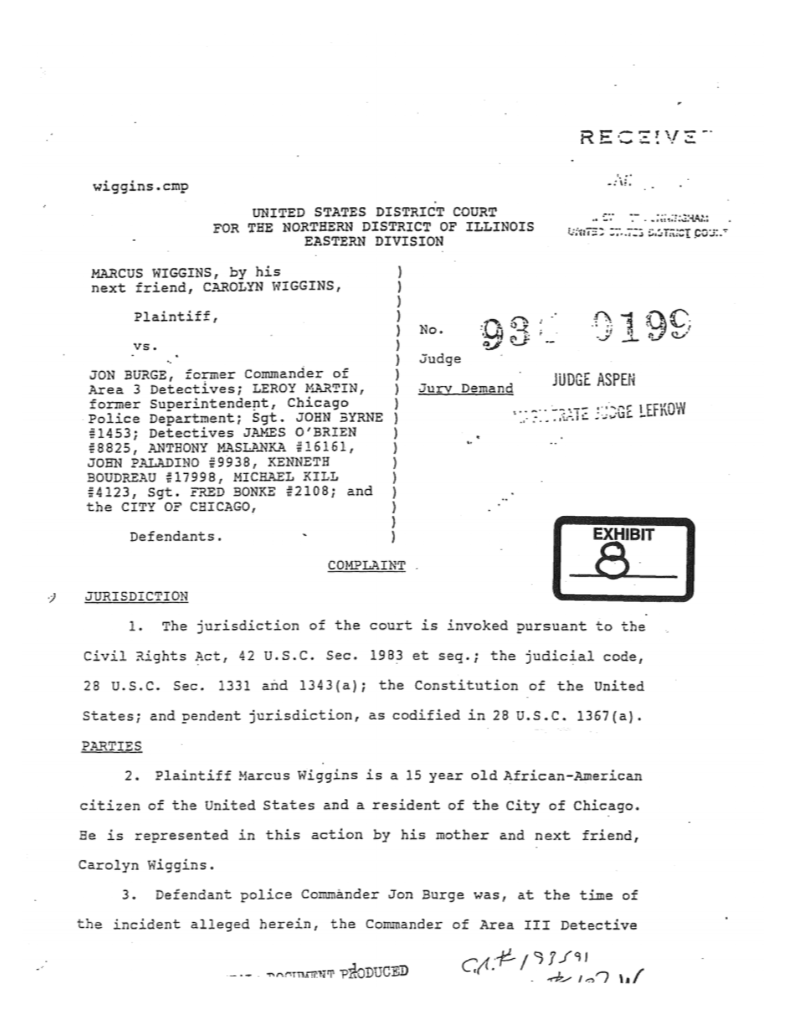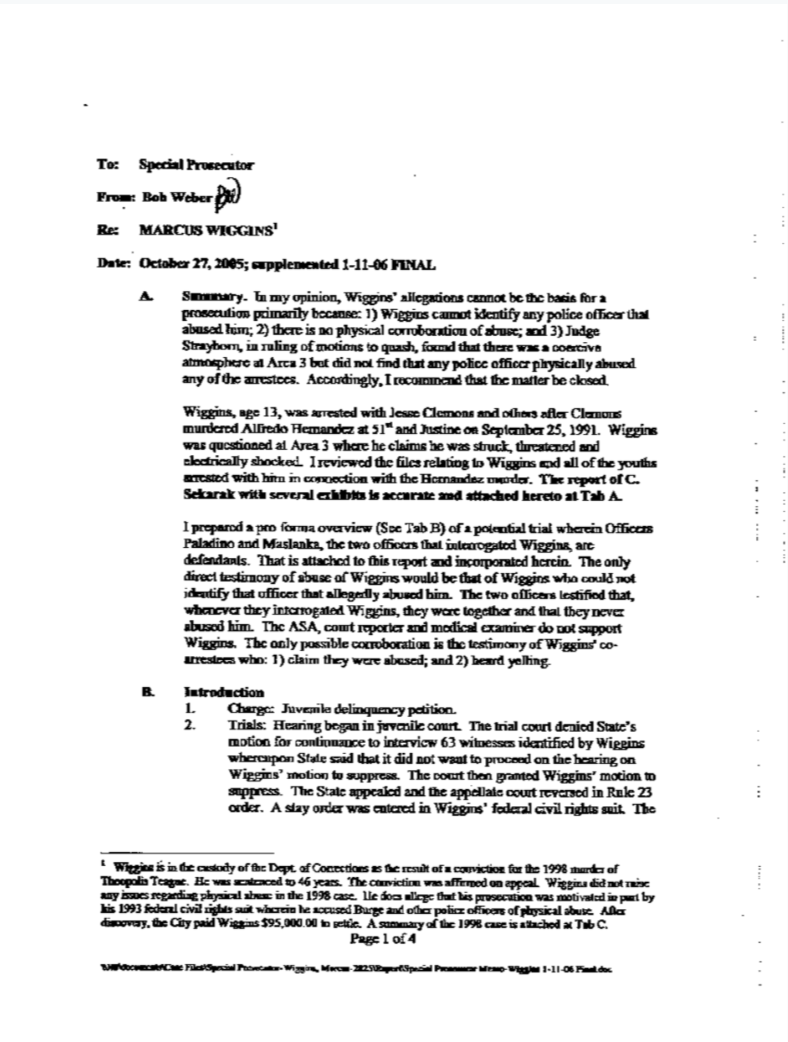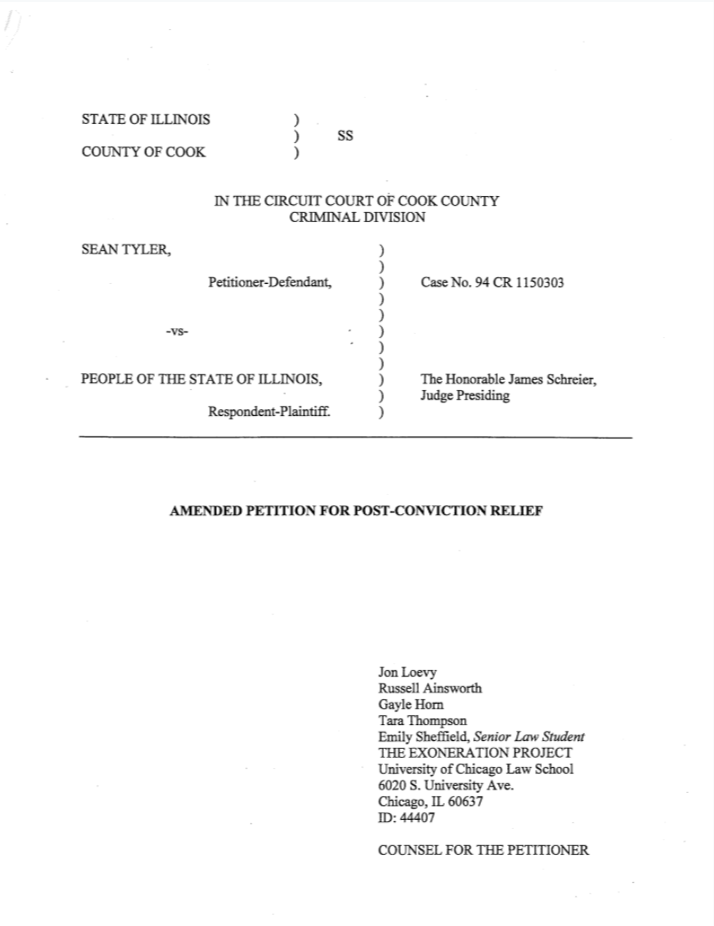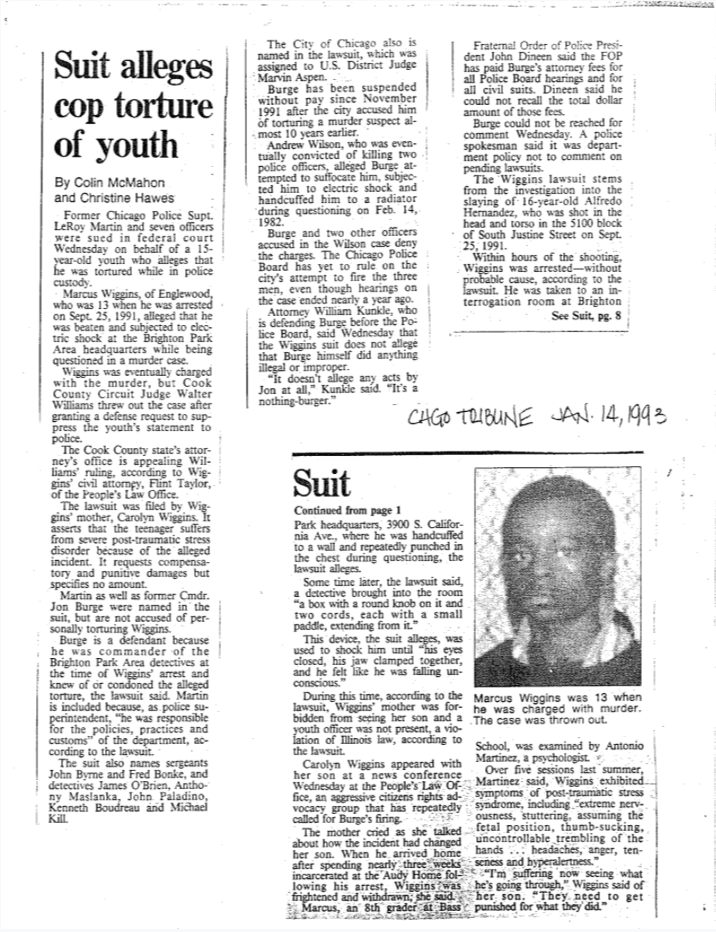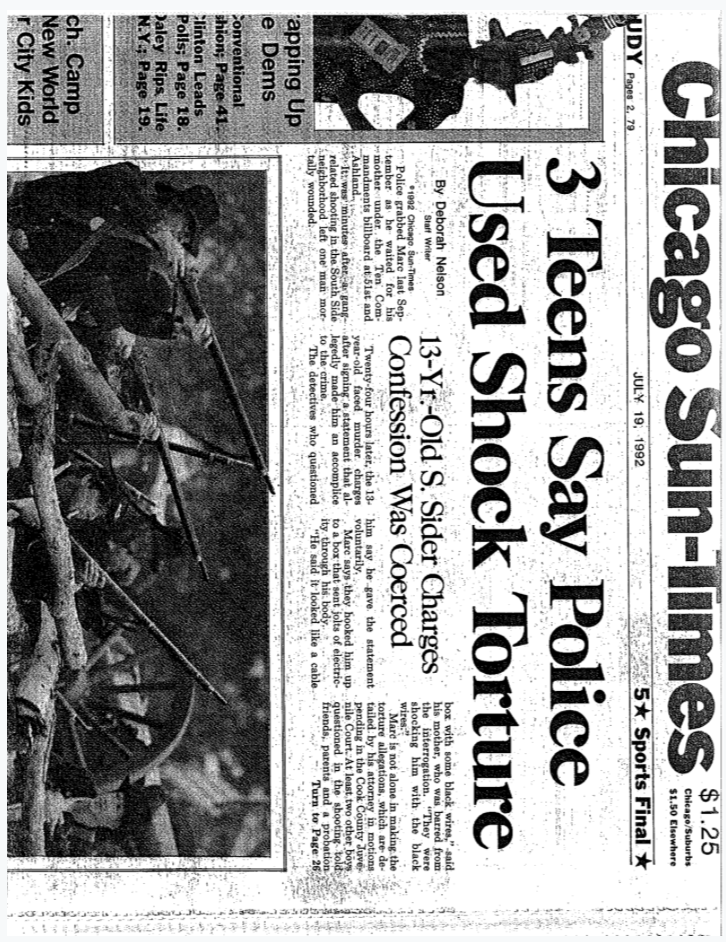Wiggins arrested and tortured at Area 3
Around 9:15pm on September 25, 1991, 16-year-old Alfredo Hernandez was fatally shot on Chicago’s South Side. Later that night, officers from Area 3 Violent Crimes, a unit commanded by Jon Burge, arrested six people for the shooting, including 13-year-old Marcus Wiggins.
Area 3 Detective James O’Brien arrested Wiggins that night in front of his mother, Carolyn Johnson, who asked to stay with her son. According to court records, O’Brien refused to let her, putting Wiggins, alone, into an unmarked police car and driving off.
“That was kidnapping,” Johnson said, describing in a recent interview with the Invisible Institute how O’Brien had allegedly ripped her son out of her arms on the street.
O’Brien drove Wiggins to a nearby location where they got into another unmarked police car, which was occupied by Area 3 detectives Anthony Maslanka and John Paladino. According to court records, O’Brien got into the backseat of the vehicle next to Wiggins and used his flashlight to strike Wiggins in the head. Officers then drove Wiggins to Area 3 Violent Crimes headquarters where he was put in an interrogation room and handcuffed to the wall.
The detectives involved in Wiggins’ arrest as well as several others, including Kenneth Boudreau and Michael Kill, interrogated Wiggins alone despite a state law requirement that a youth officer be present to help protect the rights of juvenile suspects.
Maslanka and other officers repeatedly questioned Wiggins about the Hernandez shooting.
“I told them I didn’t know what happened and that’s when the torturing started,” Wiggins recalled in an interview with the Invisible Institute.
Court records allege officers punched Wiggins in the chest when he told them he didn’t know what happened. Crying, Wiggins said he continued to deny any involvement in the crime.
Coerced confessions
The next time Maslanka returned to the interrogation room he allegedly threatened to beat Wiggins again if he didn’t start talking.
Through tears, Wiggins said he gave an oral statement to avoid another beating. Perhaps unconvinced by what he heard, Maslanka left the room a third time and came back holding a small electric box. Maslanka allegedly attached the device to both of Wiggins’ hands and administered an electroshock throughout his body. At this point, Maslanka said Wiggins made a second oral statement about his involvement in the Hernandez shooting.
During this time, Area 3 detectives allegedly used the same coercive interrogation tactics on numerous other suspects and potential witnesses to the shooting. According to media articles, at least two other boys questioned in connection to the case would also later claim to have been electroshocked.
Teens face murder charges
Around 10:30am on September 26, Wiggins signed a written statement that put him at the scene of the shooting and made him an accomplice to the crime. Still, detectives held him at Area 3 for the next 12 hours. Court records indicate it wasn’t until police were about to charge Wiggins with murder and transport him to a juvenile detention center that they finally allowed the 13-year-old to call his mother for the first time since his arrest.
In official reports and statements, Area 3 detectives and their supervisors denied that Wiggins or the other suspects arrested in the Hernandez case, almost all of whom were juveniles, had been abused while in custody, claiming that the statements they obtained had been given voluntarily. It did not take long, however, before the case detectives built against the group of teenagers began to fall apart.
By then, torture allegations against Burge and men under his command, which spanned as far back as the 1970s, were not new. In 1989, Burge was one of several officers named in a federal lawsuit filed by Andrew Wilson, a man who confessed to the murder of two police officers after he was allegedly tortured by detectives in 1982. In November of 1991, several months after Wiggins’ interrogation, the Chicago Police Department suspended Burge and later recommended he be fired for his role in the torture of Andrew Wilson.
Wiggins’ case, however, still drew significant attention as it represented the first public accusation of police torture tactics being used on juvenile suspects.
Wiggins files federal lawsuit
According to media articles, Wiggins was detained for a month before a juvenile court judge ordered his release because the state did not have enough evidence to justify holding him until trial. The other five boys arrested with Wiggins would be tried together in adult court.
In 1993, Wiggins’ mother filed a federal lawsuit on behalf of her son. In addition to the detectives involved in his interrogation, the complaint also named Burge, former Superintendent Leroy Martin, as well as Sergeants John Byrne and Fred Bonke as defendants in the suit.
After the torture, Johnson remembered finding her son in the fetal position, sucking his thumb, shaking. The lawsuit claimed that Wiggins continued to suffer from severe post-traumatic stress disorder, experiencing symptoms such as headaches, anxiety attacks, stuttering and nightmares.
Acquitted of one murder, targeted with another
Cook County Circuit Court Judge Walter Williams granted Wiggins’ motion to suppress his coerced statement. The criminal case against Wiggins further fell apart due to the testimony of Sean Tyler, a teenager who had witnessed the Hernandez shooting and knew that Wiggins was innocent. Afraid of police retaliation, Tyler agreed to come forward after the judge entered a protective order preventing the officers involved in the Wiggins case from having any contact with Tyler.
While Wiggins’ civil and criminal cases were still pending, O’Brien and Boudreau, who were both named defendants in Wiggins’ lawsuit, tried to stick both Wiggins and Tyler with the murder of 10-year-old Rodney Collins in March 1994. This time, Wiggins had indisputable proof that he had been out of the state when the crime occured. So, police zeroed in on Tyler instead. Despite no physical evidence, Area 3 detectives interrogated Tyler for two days until he confessed to the crime. Tyler was later convicted of the Collins’ murder in 1995.
In May 1994, Wiggins’ co-defendants in the Hernandez case were all either acquitted or had their cases thrown out by the state. The charges against Wiggins were dropped the following year. The Chicago Police Department’s Office of Professional Standards found that detectives O’Brien and Boudreau had violated the rights of the five juvenile suspects involved in the case.
In 1996, the city of Chicago settled Wiggins’ federal lawsuit for $95,000. This resolution, however, would unfortunately not mean the end of Wiggins’ involvement with CPD.
Convicted and sentenced to 46 years
In February 1998, a man named Theopolis Teague was murdered in a South Side neighborhood near where Wiggins lived. According to a recent court filing, Sgt. Bonke, a named defendant in Wiggins’ lawsuit, supervised the investigation into Teague’s death. Boudreau had some involvement in the investigation as well.
Court records indicate Wiggins was arrested less than three hours after the shooting. Investigators spoke with four witnesses, who had implicated Wiggins as the shooter.
While he was being questioned by police, Wiggins said O’Brien stuck his head into the interrogation room. “We finally got your ass now,” Wiggins remembered O’Brien said in a recent interview with the Invisible Institute. “Now go sit in a corner and suck your thumb because we’re putting this on you. You ain’t getting out of this.”
The testimony of three witnesses made up the basis of the case against Wiggins. In September 1999, a jury found Wiggins guilty of first-degree murder, and he was sentenced to 46 years in prison. Though Wiggins appealed his conviction, the Appellate Court denied the appeal in January 2002. Several months later, Wiggins filed a petition for post-conviction relief, which was also denied.
Others strongly believed in Wiggins’ innocence as well. Attorneys and students from the Center on Wrongful Convictions at Northwestern University tried to help overturn Wiggins’ conviction, even chronicling their investigation and findings in a documentary released in 2014.
In February 2017, Wiggins sent an application to Illinois’ Torture Inquiry and Relief Commission, which included recantations from two of the witnesses who testified at his trial as well as a letter from an attorney detailing a recantation from the third witness. According to court documents, the witnesses all described being coerced by police to implicate Wiggins as Teague’s killer. The fourth witness, who did not testify at trial, has also said that Wiggins is innocent. Despite this overwhelming evidence, TIRC denied the application due to a lack of jurisdiction.
Wiggins’ release and continued fight for justice
Wiggins, now 42, was released on parole in October 2020 after more than 20 years in prison.
Wiggins’ attorneys have since filed an amended post-conviction petition, which includes newly discovered evidence of Wiggins’ innocence and details a criminal conspiracy by several officers to frame Wiggins for Teague’s murder. A recent article in the Chicago Sun-Times indicated the first hearing on the petition, which seeks to overturn Wiggins’ conviction, is scheduled for February 2021.
“It’s a long and painful journey and I’m still going through it right now,” Wiggins told the Invisible Institute when asked how the officers involved had impacted his life. “You got all this politics going on. All of this behind the scenes code of silence about what they was doing and what they did to people before me...it’s bigger than me.”
— Written by Dana Brozost-Kelleher
Documents
Media
Hero for a Semester Documentary






